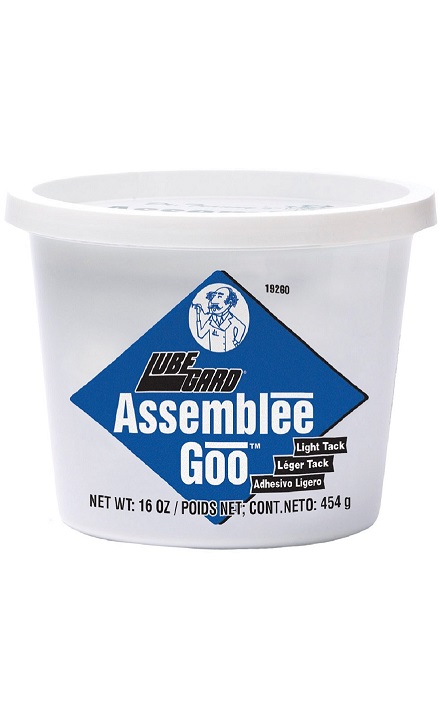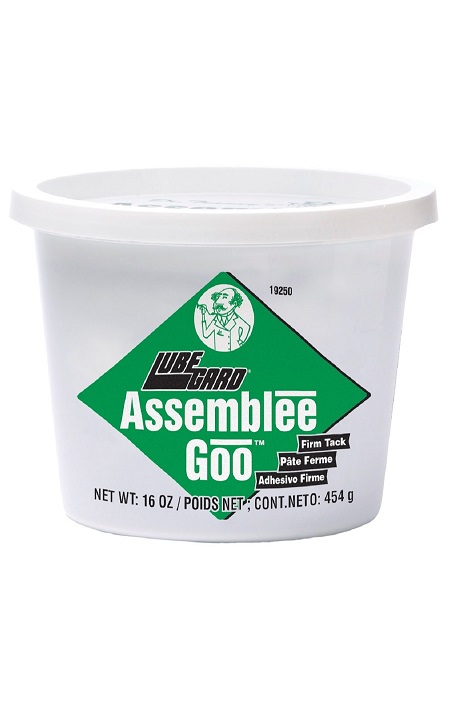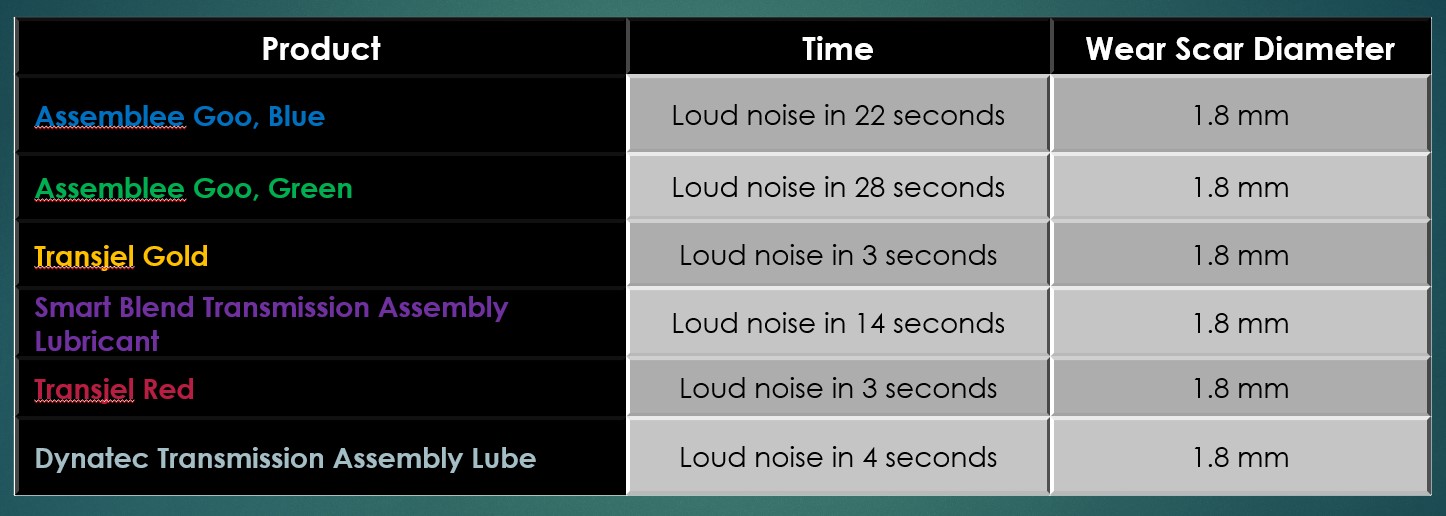A Tale of Two Goo’s - January 14, 2021
A Tale of Two Goo’s
Development and introduction of the next generation of products and services in the automotive aftermarket is necessary as some categories of products go out of fashion or just plain lose their place on the shelf because they become irrelevant. Sometimes the ability to improve or “reinvent” an established product becomes the driving force for new relevance and innovation. This, in a nutshell, is what recently came to pass concerning one of our oldest and most popular assembly products.
We have produced and supplied our green assembly “Goo” for over thirty years to the transmission rebuilders of the world and anyone else needing a moderately tacky, oil-compatible gel to aide in rebuilding pumps, transfer cases or any mechanical assembly. Over the passage of time, we added another gel (blue) to the line as a second assembly aide of lower viscosity for colder environments.


Most manufacturers would be content with this successful pair of assembly aides, and for a long time we were. Then came the comments, questions and photos from transmission rebuilders asking why they were seeing fine metallic debris after a successful break-in and large amounts of the same type of debris in units that failed soon after installation. The final consensus of the industry was that a “certain amount of metallic debris was normal”. We did not know if that conclusion satisfied them or if they were just being pragmatic and deciding that some debris was okay if the unit did not fail. We (LUBEGARD R&D team) were not convinced the problem was NOT lubrication related. In theory, the assembly lube we and others make, regardless of the color, allowed the easy installation of gaskets, O-rings and thrust washers, but we always assumed the simple tacky lubes being used were effective at supplying a protective film until the oil in the sump was pumped through and provided the specified lubrication protection it would have when running.
Because our R&D Lab has multiple testing rigs, we decided to use our improved ability to test for wear protection as it pertains to assembly lubes. We gathered representative samples of the transmission assembly lubes readily available in the automotive aftermarket (including our own green and blue assembly goo) and developed a simple wear test to measure the actual protection these assembly aides provided to the surfaces they were applied to. To say the results were a surprise to our R&D team understates our consternation at what we found. Not only did our assembly aides provide little to no wear protection, but none of the others did either. The notion we had, that the assembly lubes provided protection, was just that, a notion. After a bit of research, we started to have a theory about the source of the metallic debris, and, consequently, a possible solution to the problem.
Understanding the need for a new generation of assembly aides for transmissions presented the challenge of testing current products to define their performance while formulating products that can seamlessly replace the current offering. The goal was to create a product with a high level of boundary lubricating properties provided by the anti-wear and extreme pressure additive we developed in house for this purpose (LXE-EP). This new assembly gel would contain the additives that react with the sliding surfaces under the severe conditions in the contact zone on bearings, bushings and thrust washers to give molecular coatings with low shear strength, functionally forming a lubricating film precisely on the component where it is needed.
Our test procedure was designed around the well regarded and universally used 4-Ball wear test. With these validated fixtures we used a procedure developed in our laboratory (details are available upon request) and acquired as many transmission assembly gels as we could readily find. We melted samples of each product in the cup the 4-ball test specimens were seated in and applied load. The results were very interesting. We measured them on a timed interval basis, ending the test at the time limit or at the loud noise the test specimens make when the contacting steel surfaces are failing under load, whichever came first. Then we measured the wear scar. Initial results were as follows:

Even though our assembly aides were the best of the lot, there were not really any winners. Protection from wear was not a performance aspect of currently available transmission assembly gels. Recognizing this as the possible source of unwanted wear on startup, we turned to our bio-based LXE-XP technology and its natural molecular boundary lubricating properties. The boundary lubricating action of our technology is associated with oiliness and lubricity. In practical applications, coverage of the surface to be protected by a layer of our boundary lubricant offers sufficient protection for startup operations. We took samples of our “Goo” products and blended in LUBEGARD LXE-XP technology to formulate a new “improved” Goo in both viscosity types. We then ran them in the same 4-ball evaluation the earlier assembly lubes were tested on. Again, the results were eye opening:

The observations of knowledgeable rebuilders led to our re-evaluation of the assembly goos, and ultimately a better product. The addition of a boundary lubricant additive and the specialized properties of protection from wear and damage from extreme pressure turned gels designed to only hold a gasket or thrust washer in place into an impressive lubricant and a truly powerful break-in tool for the advanced rebuilder looking to optimize technology in his favor for the best outcome. Better rebuilding through better additive chemistry!
Here at LUBEGARD we strive to produce the highest performing lubricants and additives in the categories we produce products for. It was time for improvements in performance of assembly products to produce the best outcome possible when building the lubrication-sensitive components of modern vehicles and equipment.

